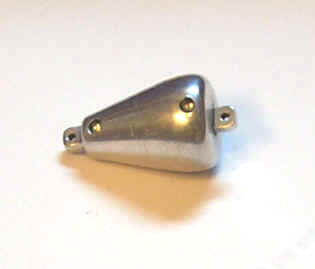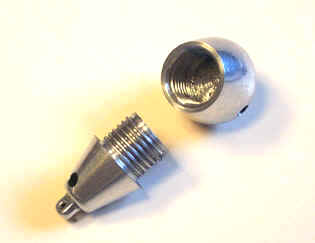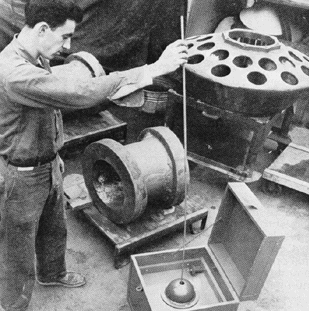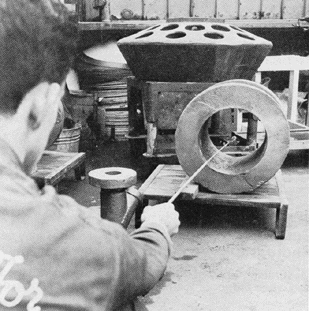Radium Industrial Radiography Source (ca. 1940s)


This is an example of an industrial radiography source of the type used in the 1930s and 1940s. Sometimes referred to as a plumbbob, it would have contained approximately 0.1 Ci of Ra-226. Although expensive, radium was used because no other radionuclides were then available of sufficient strength. After World War II, Ir-192 and Co-60 quickly became the radionuclides of choice and the use of radium was abandoned.
When used, the radiography source would be placed on one side of the weld or metal casting being "X-rayed," while a sheet of photographic film was placed on the other side. Exposure times were quite long, e.g., one hour to as much as four days. The source was either handled with a long pole ("fishpole") or tied to a cord. The latter method, for example, would allow it to be pulled through a long pipe.

This photo is from NUREG/BR-0024 Working Safely in Gamma Radiography. In the photo, the source is being removed from its shield ("pig").

This photo is from NUREG/BR-0024 Working Safely in Gamma Radiography. The photo shows the source being held at the end of a fishpole. The long exposure time and an unsteady hand often resulted in a blurry X-ray image.
The radium (usually radium sulphate) was packed into a cylindrical silver container, which was then placed inside a larger outer capsule. There were two general types of radium capsules: the aluminum type shown at the top of the page, and a steel type. The latter, manipulated at the end of a magnetic handling rod, had two parts: an hexagonal base with a flat bottom (ca. 1" diameter and 1" long) and a short conical cap.
References
- NUREG/BR-0024 Working Safely in Gamma Radiography.
- Morrison, A. Radiography with Cobalt-60. Nucleonics December 1949. Pages 19-32.
